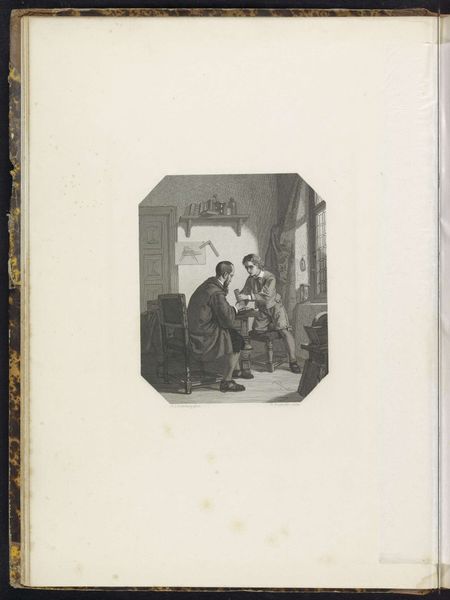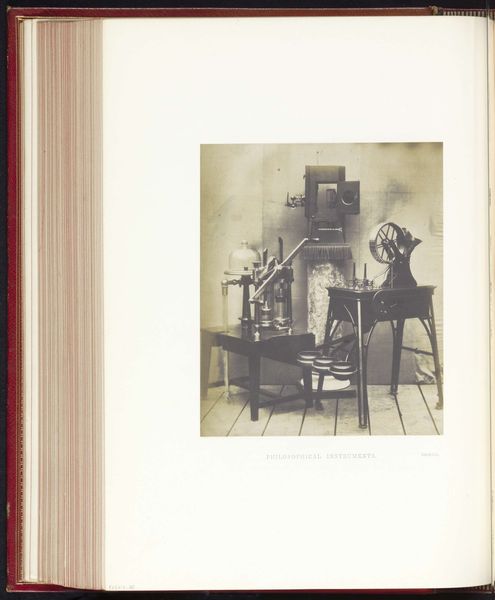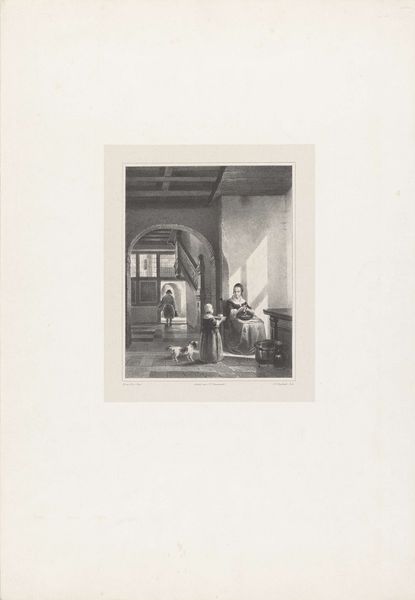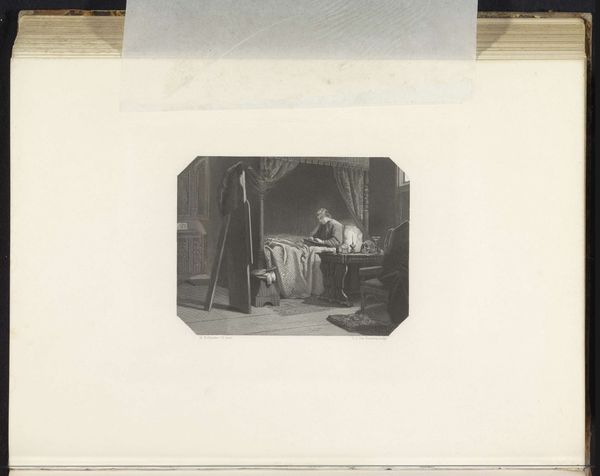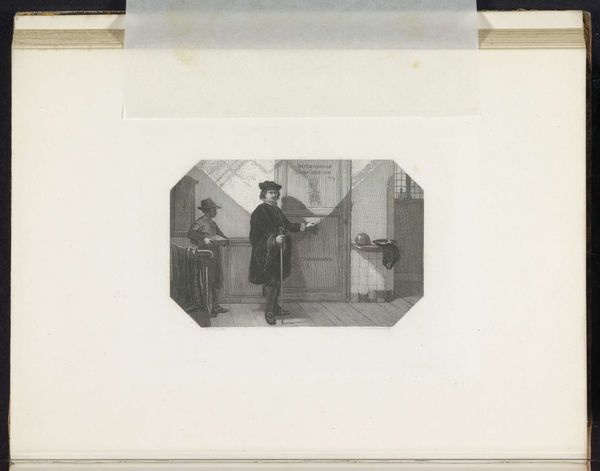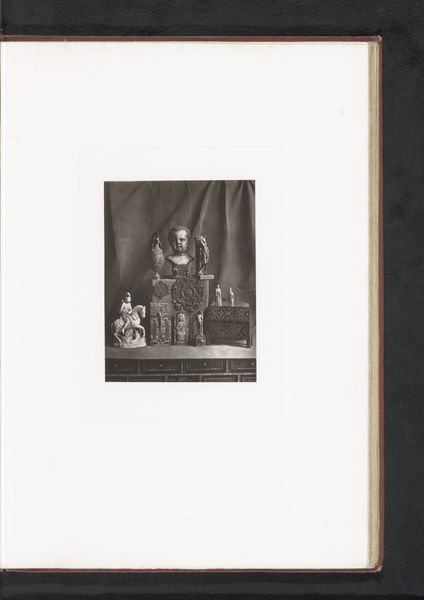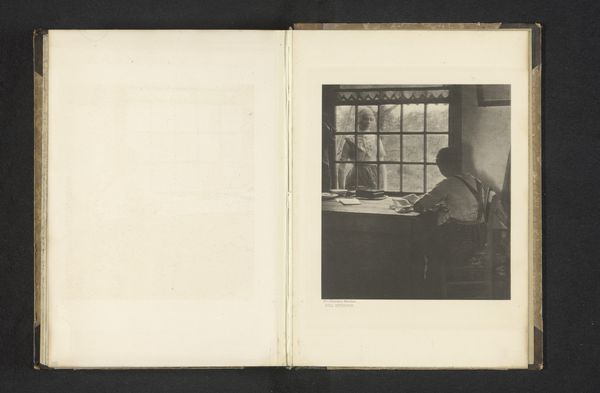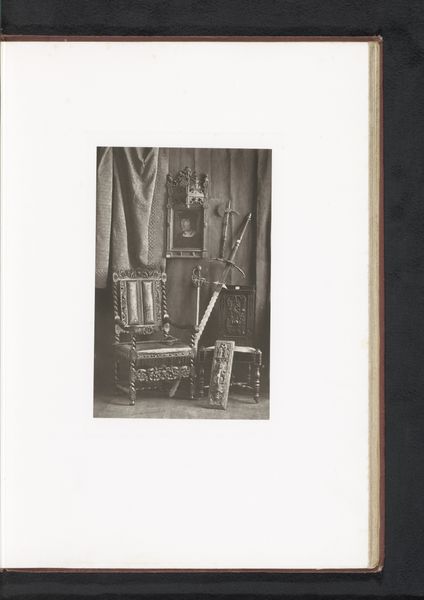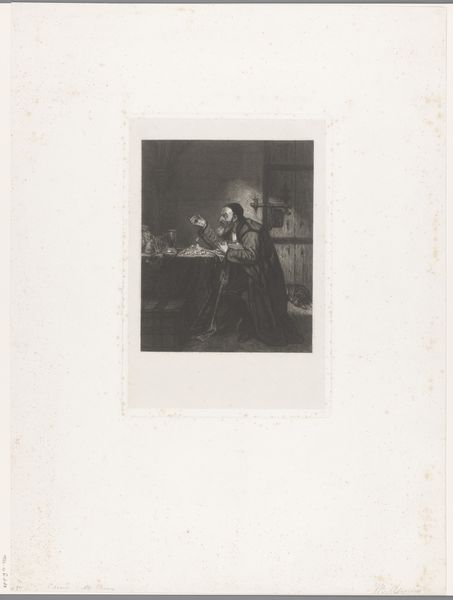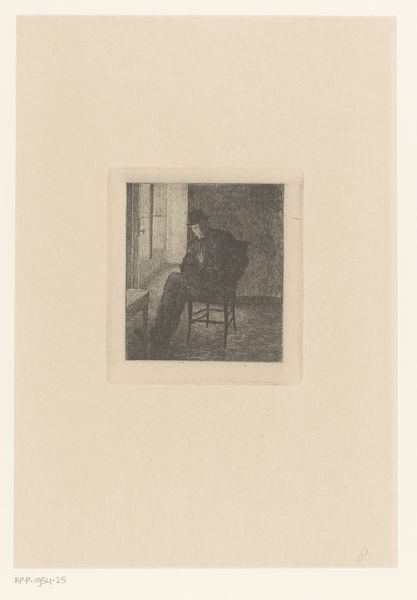
drawing, print, etching, paper
#
portrait
#
drawing
# print
#
etching
#
paper
#
genre-painting
#
academic-art
#
realism
Dimensions: height 240 mm, width 190 mm
Copyright: Rijks Museum: Open Domain
Hendrik Sluyter created this piece in 1839. It is a line engraving, a printmaking technique with a long history and strong ties to industrial production. With line engraving, the image is incised into a metal plate, traditionally copper, using a tool called a burin. The depth and width of the lines determine the darkness and intensity of the printed image. Ink is then applied to the plate and wiped off the surface, remaining only in the engraved lines. The print is created by pressing paper against the plate, transferring the ink. This was a laborious, highly skilled process, demanding meticulous craftsmanship. It was also an early form of mass production, allowing for the replication and distribution of images on a relatively large scale. In fact, this technique was crucial for disseminating knowledge, art, and political ideas during the Industrial Revolution. Ultimately, it's a reminder that even seemingly traditional art forms are often deeply entwined with industry, labor, and the wider social context.
Comments
No comments
Be the first to comment and join the conversation on the ultimate creative platform.
